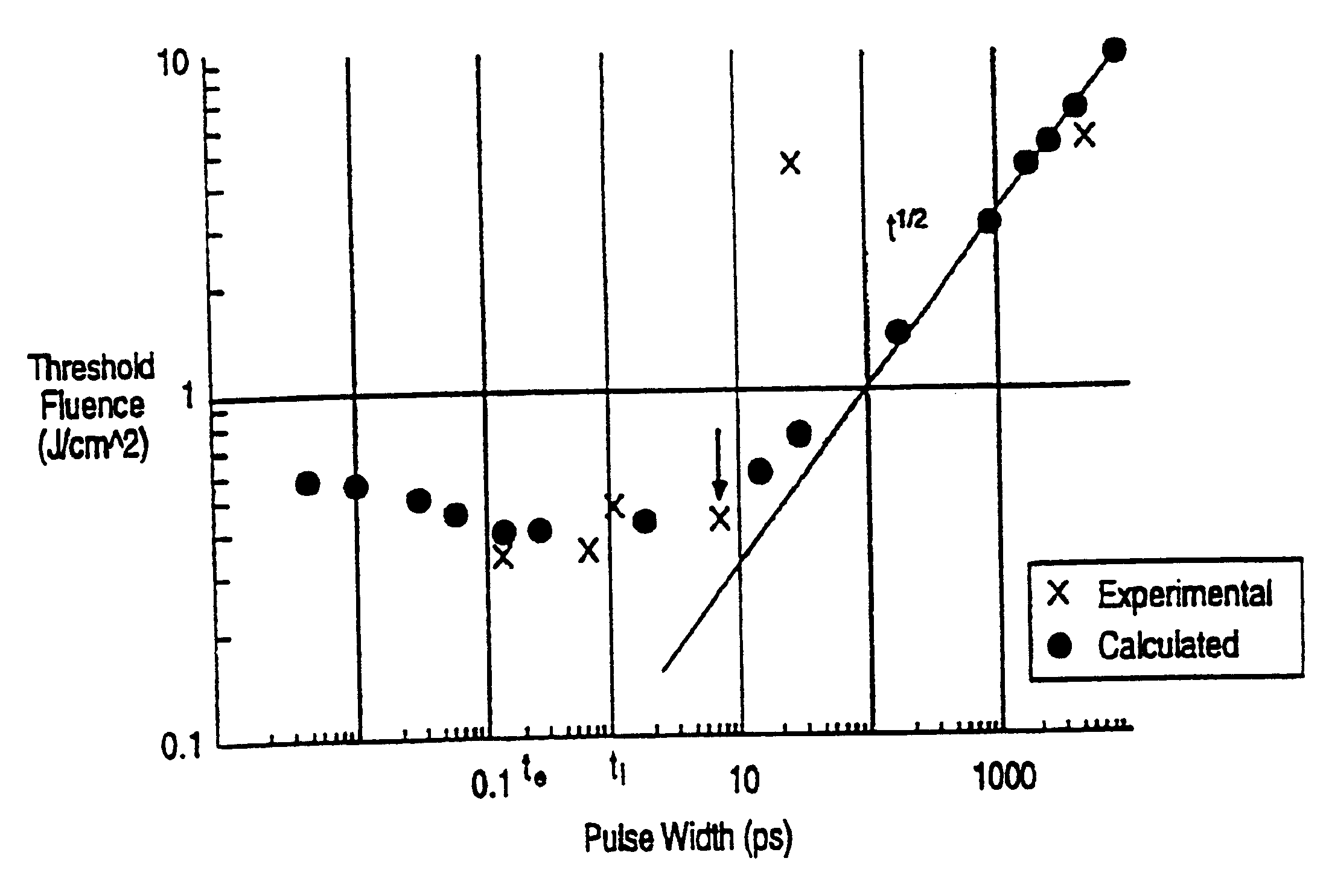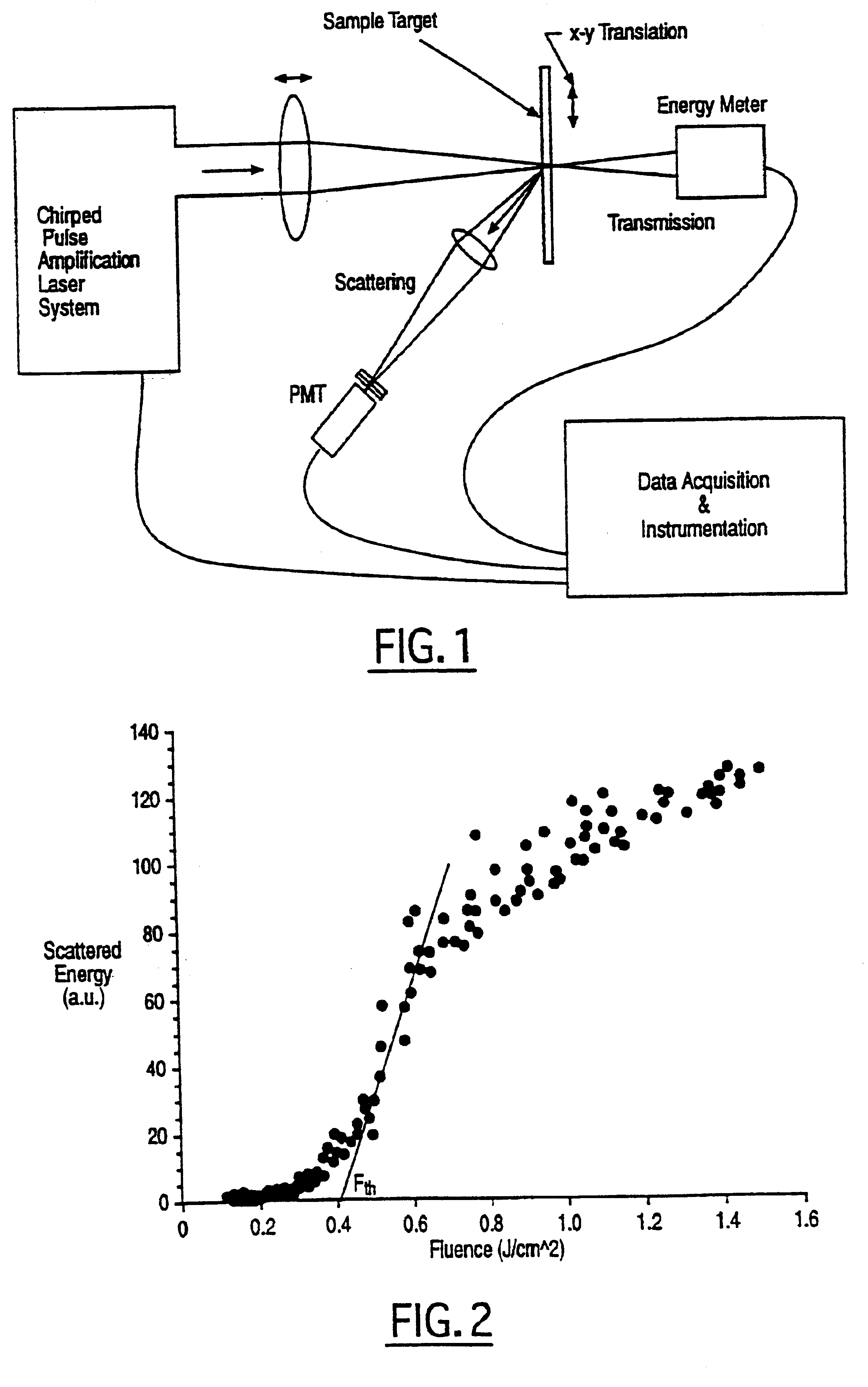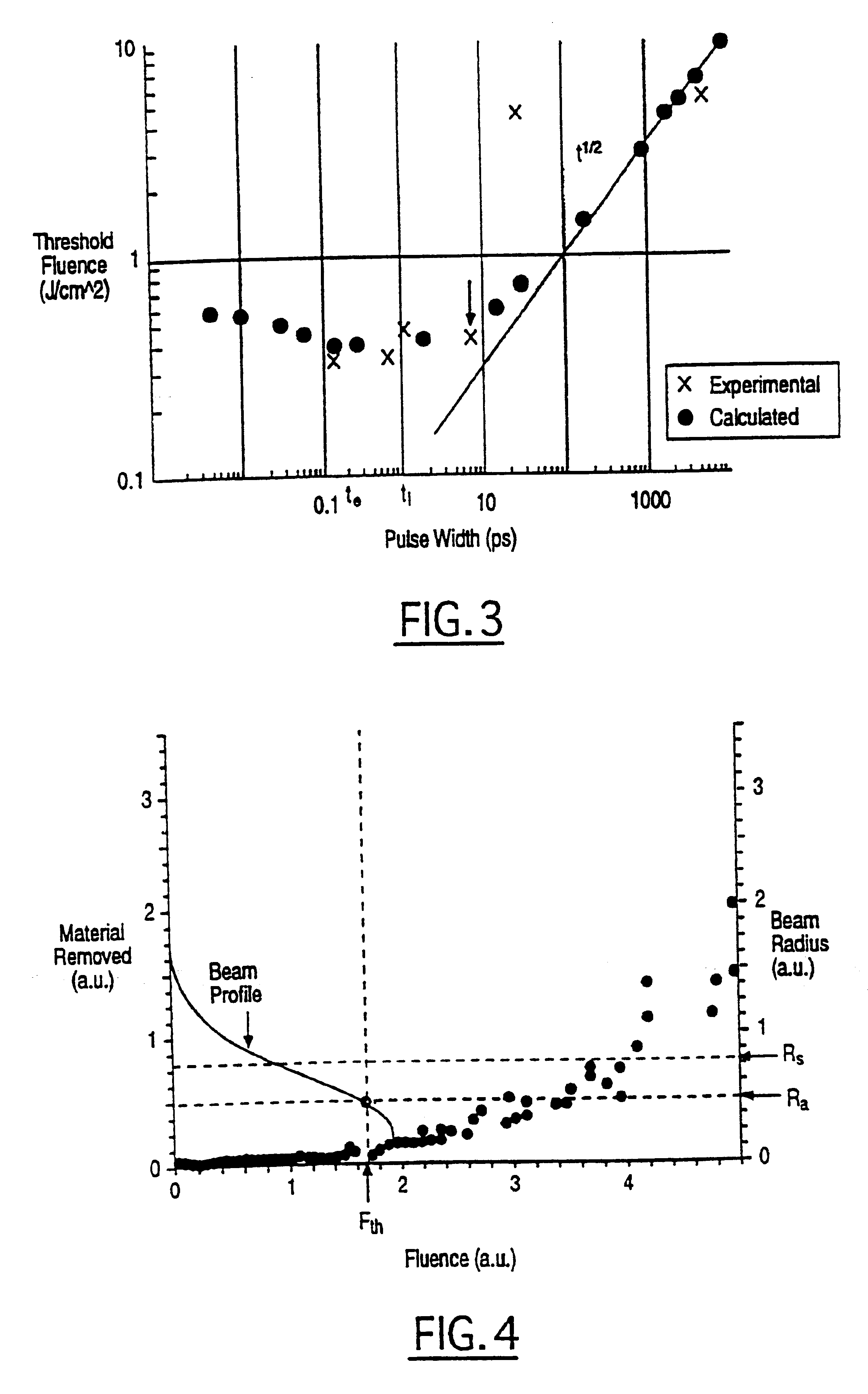Method for controlling configuration of laser induced breakdown and ablation
a technology of breakdown and ablation, which is applied in the field of controlling the configuration of laser breakdown and ablation, can solve the problems of affecting the peripheral area adjacent to the spot, current lasers using nanosecond pulses cannot produce features with a high degree of precision and control
- Summary
- Abstract
- Description
- Claims
- Application Information
AI Technical Summary
Benefits of technology
Problems solved by technology
Method used
Image
Examples
example 1
Opaque Material
FIG. 1 shows an experimental setup for determining threshold fluence by determining scattered energy versus incident fluence and by determining threshold fluence versus pulse width. The system includes means for generating a pulsed laser beam as described earlier, and means, typically a lens, for collecting emission from the target to a photomultiplier tube. Change of transmission through a transparent sample is measured with an energy meter.
FIG. 2 shows a plot of data obtained from an absorbing medium which is gold using 150 fs pulse and FIG. 3 shows threshold fluence versus pulse width. The arrow in FIG. 3 identifies the point at which the relationship between the threshold fluence and pulse width varies dramatically.
In experimental conditions with wavelength of 800 nm and 200 fs pulses on gold (FIG. 3), the absorption depth is 275 A with a diffusion length of 50 A. In the case of nanosecond pulses the diffusion length, which is on the order of 10 .mu.m (micron) in ...
example 2
Transparent Material
A series of tests were performed on an SiO.sub.2 (glass) sample to determine the laser induced breakdown (LIB) threshold as a function of laser pulse width between 150 fs-7 ns, using a CPA laser system. The short pulse laser used was a 10 Hz Ti:Sapphire oscillator amplifier system based on the CPA technique. The laser pulse was focused by an f=25 cm lens inside the SiO.sub.2 sample. The Rayleigh length of the focused beam is .about.2 mm. The focused spot size was measured in-situ by a microscope objective lens. The measured spot size FWHM (full width at half max) was 26 .mu.m in diameter in a gaussian mode. The fused silica samples were made from Corning 7940, with a thickness of 0.15 mm. They were optically polished on both sides with a scratch / dig of 20-10. Each sample was cleaned by methanol before the experiment. Thin samples were used in order to avoid the complications of self-focusing of the laser pulses in the bulk. The SiO.sub.2 sample was mounted on a c...
example 3
Tissue
A series of experiments was performed to determine the breakdown threshold of cornea as a function of laser pulse width between 150 fs-7 ns, using a CPA laser system. As noted earlier, in this CPA laser system, laser pulse width can be varied while all other experimental parameters (spot size, wavelength, energy, etc.) remain unchanged. The laser was focused to a spot size (FWHM) of 26 .mu.m in diameter. The plasma emission was recorded as a function of pulse energy in order to determine the tissue damage threshold. Histologic damage was also assessed.
Breakdown thresholds calculated from plasma emission data revealed deviations from the scaling law. F.sub.th .alpha. T.sup.1 / 2, as in the case of metals and glass. As shown in FIG. 9, the scaling law of the fluence threshold is true to about 10 ps, and fail when the pulse shortens to less than a few picoseconds. As shown in FIGS. 10 and 11, the ablation or LIB threshold varies dramatically at high (long) pulse width. It is very p...
PUM
| Property | Measurement | Unit |
|---|---|---|
| energy | aaaaa | aaaaa |
| spot size | aaaaa | aaaaa |
| size | aaaaa | aaaaa |
Abstract
Description
Claims
Application Information
 Login to View More
Login to View More - R&D
- Intellectual Property
- Life Sciences
- Materials
- Tech Scout
- Unparalleled Data Quality
- Higher Quality Content
- 60% Fewer Hallucinations
Browse by: Latest US Patents, China's latest patents, Technical Efficacy Thesaurus, Application Domain, Technology Topic, Popular Technical Reports.
© 2025 PatSnap. All rights reserved.Legal|Privacy policy|Modern Slavery Act Transparency Statement|Sitemap|About US| Contact US: help@patsnap.com



